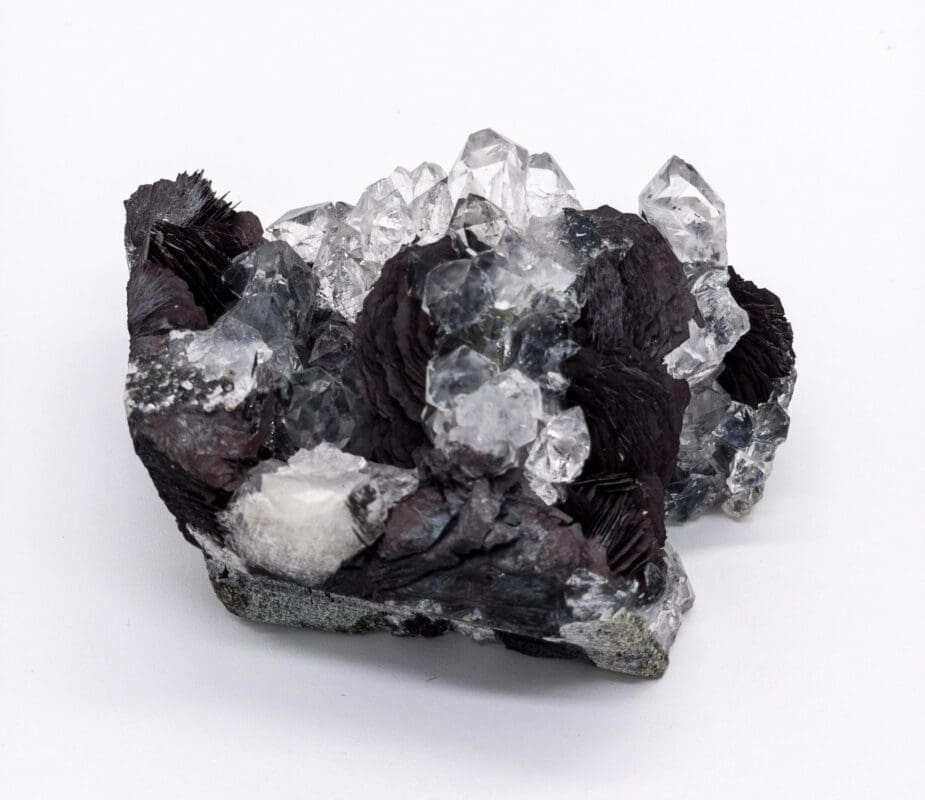Understanding Crystal Formation: Nature’s Marvelous Process
Introduction to Crystal Formation
Crystals captivate us with their beauty and geometric precision, representing one of nature’s most fascinating natural phenomena. They emerge in various forms, including gemstones, rock crystals, and minerals, each with unique chemical compositions that define their characteristics. The process of crystal formation, pivotal in both scientific inquiry and cultural significance, spans microscopic to macroscopic realms, offering a glimpse into the intricate dance of nature’s forces.
Microscopic Marvels: The Initial Stage of Crystal Formation
At the microscopic level, the journey of a crystal begins with molecules aligning into precise patterns. This alignment is primarily driven by the electrostatic attraction among molecules of different charges, complemented by van der Waal’s forces and hydrogen bonding. Such molecular orchestration can be sparked by natural shifts in environmental conditions, like temperature, pressure, or humidity variations, and even by exposure to sunlight. This stage sets the foundational structure, allowing crystals to embark on a path of growth influenced by their surrounding conditions.
Tectonic Influence: Shaping Crystals on a Grand Scale
Shifting to a larger scale, tectonic plate movements play a critical role in crystal formation. The gradual yet immense forces exerted by plate tectonics provide the necessary environmental conditions for crystal formation over millennia. This macroscopic level of crystal formation enables crystals to develop robust lattice structures, capable of resisting the stresses induced by geological activities. Remarkably, a vast majority of Earth’s natural crystals are the products of such slow, relentless processes, underscoring the deep interconnection between our planet’s dynamics and crystal formation.
Diverse Pathways to Crystal Formation
Whether forming minute structures visible only under a microscope or grand gemstones admired for their beauty, crystals require specific conditions to materialize. For instance, rock crystals thrive under intense pressure and heat, typically found deep underground, whereas gemstones like amethyst prefer cooler environments. Minerals such as gypsum demand particular pH levels for their crystallization. This diversity in formation conditions underscores the adaptability and variety of crystals, making them subjects of both admiration and scientific study.
Crystals and Rocks: Unveiling the Distinction
While all crystals are rocks, not all rocks are crystals. The crystalline structure is a hallmark of specific crystal formation processes involving heat, pressure, and chemical interactions within the Earth’s crust. In contrast, rocks like sandstone or shale emerge from the consolidation of various sedimentary materials, lacking the orderly molecular pattern of crystals. Understanding this distinction enriches our appreciation of geological phenomena and the myriad forms they manifest.
Conclusion: Embracing the Wonders of Crystals
The study of crystals bridges ancient wisdom with modern science, illustrating how these natural formations capture both the imagination and the intellect. Their presence in various cultures and scientific applications underscores their significance beyond mere aesthetic value. By delving into the realm of crystal formation, we uncover the profound connections between Earth’s geophysical processes and the enchanting beauty of its mineralogical treasures.
FAQ
- What is crystal formation?
- Crystal formation is a natural process where molecules arrange themselves into specific, repeating patterns to create crystals. This process can occur at various scales and under different environmental conditions, leading to the diverse array of crystals we find in nature.
- In what forms do crystals occur?
- Crystals occur in various forms, including rock crystals, minerals, and gemstones. Each of these has distinct chemical compositions and properties, influenced by the conditions under which they form.
- What forces are involved in microscopic crystal formation?
- At the microscopic level, crystal formation involves electrostatic attraction between molecules with differing charges, as well as van der Waal’s forces and hydrogen bonding. These forces guide the organized structure of a crystal.
- How do environmental conditions like temperature and pressure influence crystal formation?
- Environmental conditions such as fluctuations in temperature, pressure, and humidity can significantly influence crystal formation. For example, rock crystals need high pressure and temperature to form, whereas gemstones like amethyst grow under lower temperatures.
- What role do tectonic plates play in crystal development?
- The movement of tectonic plates can affect crystal formation on a macroscopic level, providing the necessary conditions for crystals to form over long periods. The pressure and heat from tectonic activity help form large crystal structures.
- Why do certain minerals need specific pH levels for growth?
- Certain minerals, like gypsum, require specific pH levels because the ionic concentration and availability of necessary chemical components at these pH levels are conducive to the mineral’s crystal growth.
- Can crystals form at both microscopic and macroscopic scales?
- Yes, crystals can form at both microscopic and macroscopic scales. At a microscopic scale, individual molecules align to start the crystal formation, while at a macroscopic scale, larger and more visible crystals can grow, influenced by geological processes.
- What is the estimated percentage of naturally formed crystals on Earth?
- It is estimated that up to 95 percent of all crystals formed on Earth are naturally occurring, with the remainder being man-made.
- How do crystals differ from other rocks?
- Crystals have a specific internal structure where molecules are arranged in a repeating pattern, while rocks are typically aggregates of various minerals without such a structured internal pattern.
- What are some ways humans have utilized crystals?
- Humans have used crystals for various purposes throughout history, including in jewelry, for decorative items, and in technological applications. In addition, many cultures have attributed special powers to crystals, and they are used in scientific research for their unique properties.

